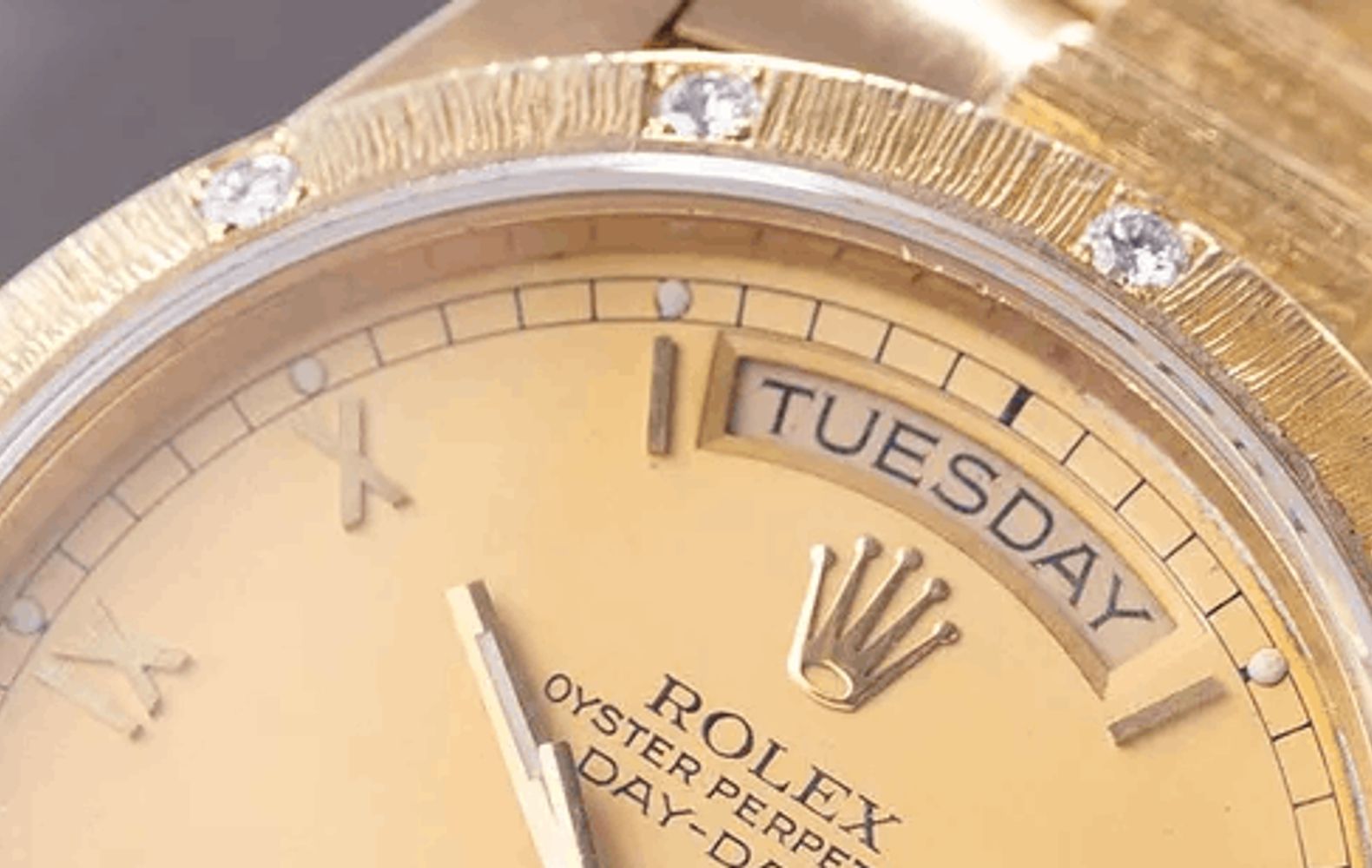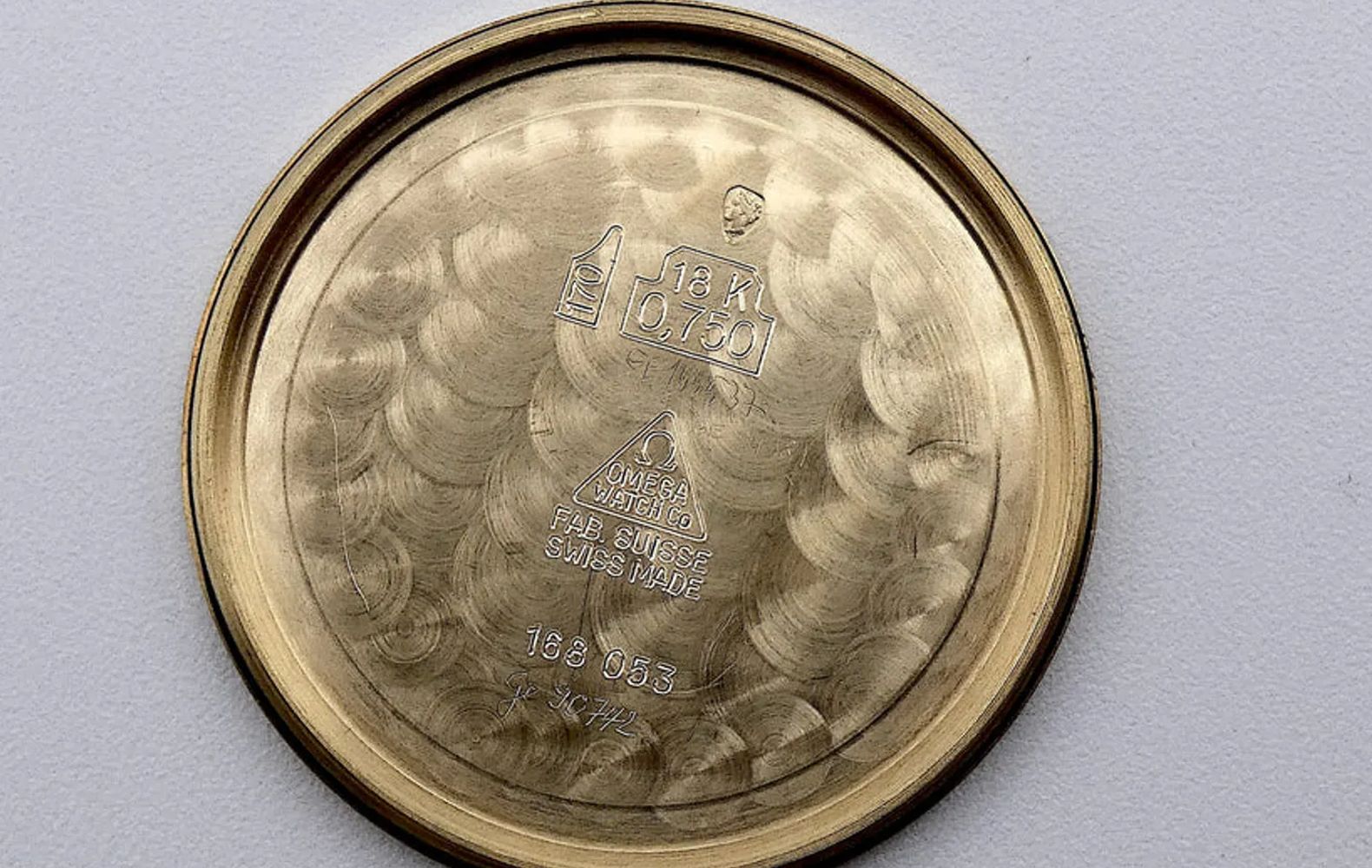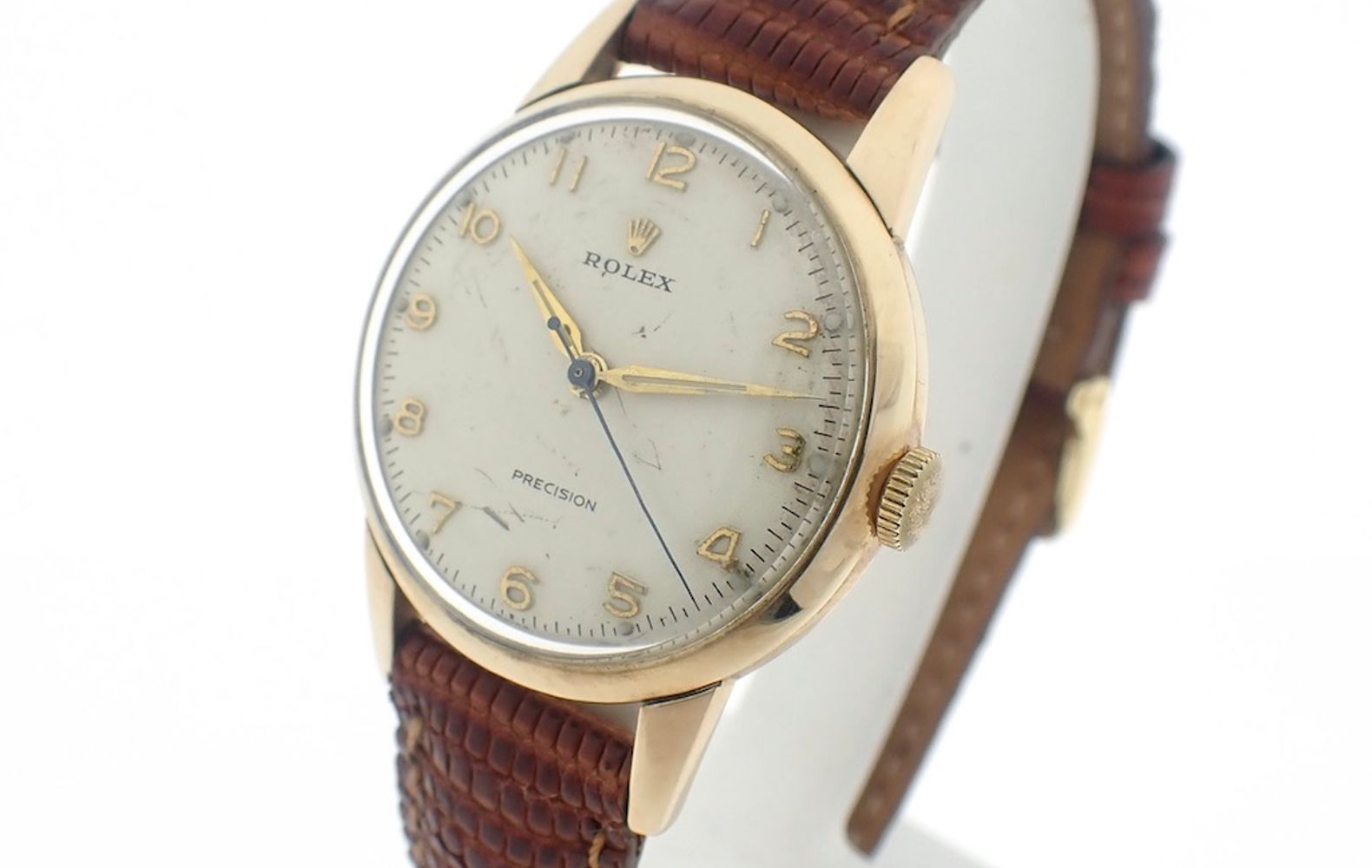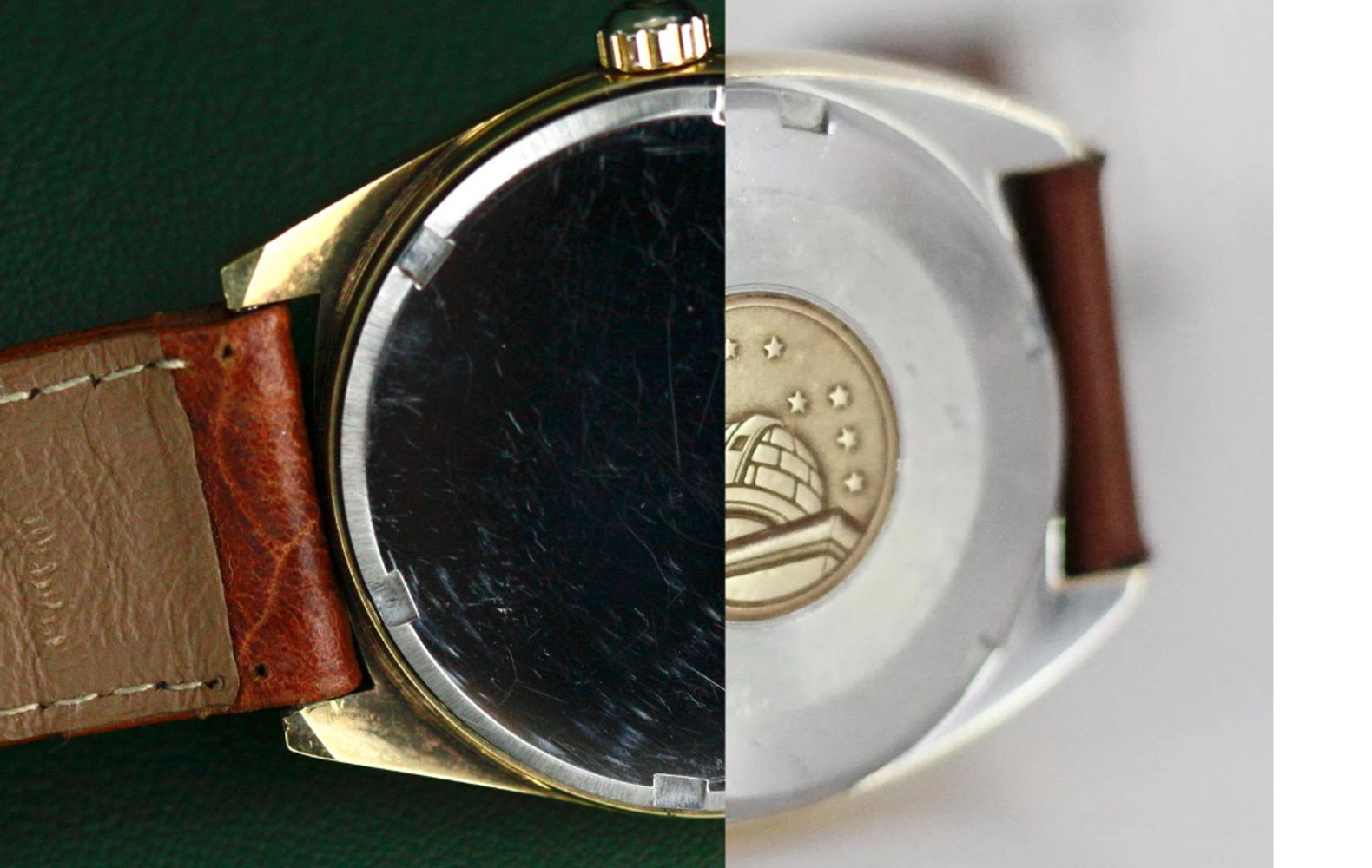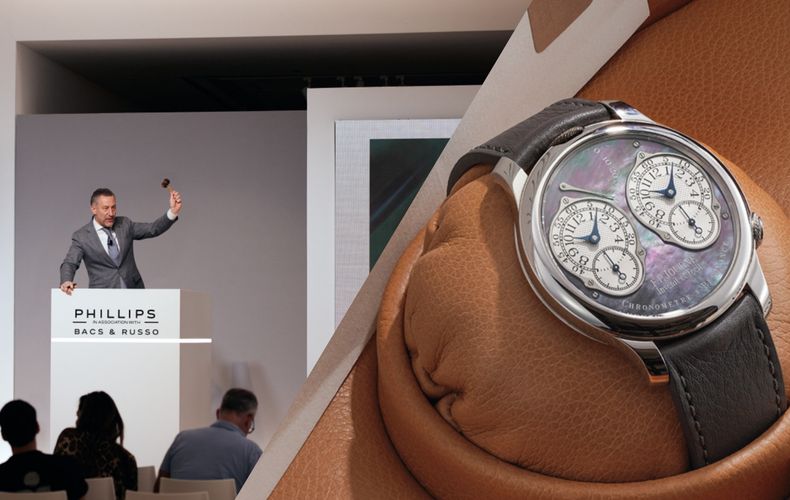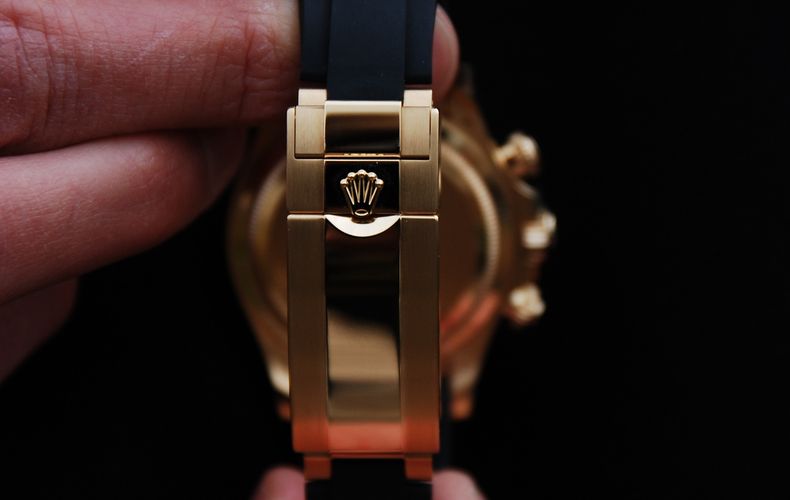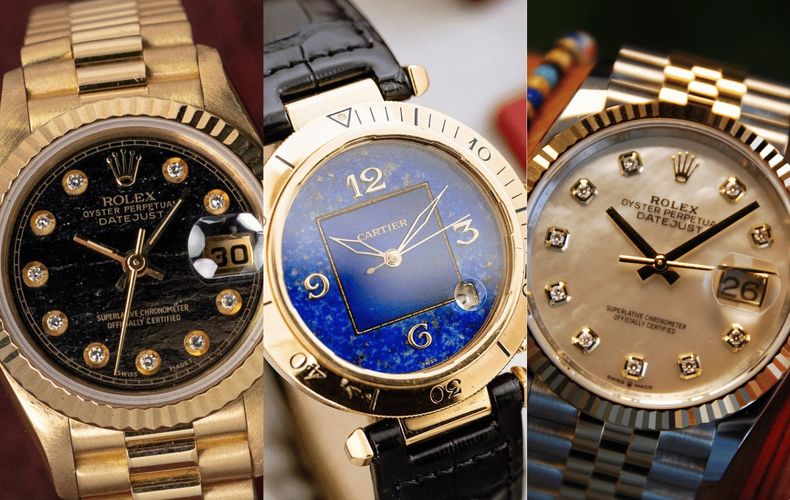Gold Capped and Gold Plated
Both Gold Capped and Gold Plated watches involve a process where a layer of gold is applied to the surface of a base metal. However this is similar to both, there are distinctions between the two in terms of the thickness of the gold layer and the manufacturing process. Gold Capped watches, also known as Gold Filled watches, have a thicker layer of gold that is applied to the base metal. The difference is way of construction, is that the layer of gold is mechanically bonded to the surface of the base metal, usually through a process that involves pressure and heat. You can recognize a Gold-Filled/Gold-Capped watch by the backside of the watch case. The backside of the watch case should have a solid metal appearance instead of a gold colour. This is because the thin layer of metal is only applied on the front side of the watch. This is different compared to gold plating.
Gold-plated watches have a thinner layer of gold applied to the surface of the base metal. The gold layer is typically deposited through processes like electroplating. When you are electroplating a metal, you submerge the piece of metal into a gold solution. When you load the piece of metal with an electric current, the surface of piece attracts gold particles from the solution, which leaves a thin layer, of only a few microns of gold on the surface. This thickness is usually 20 microns, which is 0.02 millimeters in thickness. Gold plated watches have a gold colour on all the sides of the watch case. Gold capped watches typically only have a gold colour on the front of the case. You can often see this on the backside of the caselugs. The thinner layer of gold when gold-plating, is also more sensitive to wear and tear, compared to the thicker layer of gold on gold capped watches.




